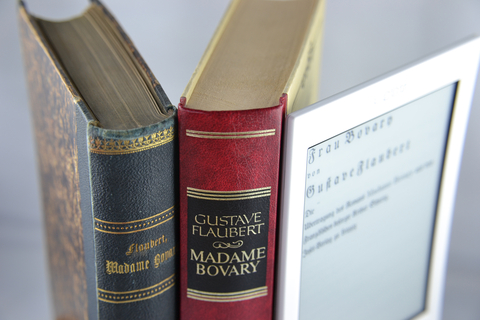Case Study: Carol Tice Finishes Strong with ‘Start Here’

An Interview With Mark Coker of Smashwords

How to De-Hype Your Content
Carol Tice spotted a hole and wanted to fill it.
“None of my other books were curated, with many writers’ points of view,” she said. “That’s more relatable for my readers—it’s people like them, saying how they met success—and I thought it would be a good addition to the published portfolio I already have.”
Tice is a veteran freelance writer who teaches other freelancers the nuts and bolts of writing for a living. All of her books to date have been about some aspect of running a freelance writing business, from how to set up a writing business to finding the right clients. “Start Here: 40 Freelance Writers Share How They Find Clients, Stay Motivated, & Earn Well Today” features guest writers who have been published on her blog.
Despite several challenges, Tice managed to profit from her latest publishing project. Here’s how she did it.
The High Cost of Maintaining a Publishing Brand
I wanted a variety of topics, and I wanted it to be full of useful advice.
“I sifted through (the blog) and found the strongest, most popular posts,” she said. “I wanted a variety of topics, and I wanted it to be full of useful advice. I also didn’t want it to be repetitive.”
Copying and pasting blog posts into Word cost her team a lot of time, but they didn’t hit a snag until they tried converting the document into the Kindle format. Her designer uses InDesign and when they tried converting the document the links didn’t look right, so they had to fix that. Since InDesign doesn’t convert to iBooks, Tice uses a software called Calibre for that process.
“I want to own my own files,” she said. “I don’t do this as a shoestring operation. This is my brand.”
And Tice takes pride in that brand. That’s why she spent $2,500 to produce “Start Here”, which is more than she’s spent on any other e-book publishing project to date. One reason it was more costly is because she decided to make a photo wall of her book’s featured 40 authors. On the sales page, scrolling over the faces reveals each author’s name.
“That was the most expensive part of the process,” Tice said. “It’s cool and interactive, but I shouldn’t have done it on a low-priced book.”
From Pre-Launch to Bundling
 For Tice, success begins with pre-selling. However, she didn’t realize a profit on “Start Here” until the final phase of her e-book launch.
For Tice, success begins with pre-selling. However, she didn’t realize a profit on “Start Here” until the final phase of her e-book launch.
Tice started talking about her book long before its release. She sent a series of emails to her list, teasing her audience with soft-sell approaches and leading questions. She also blogged about her book and promoted it on Facebook. One method she finds effective is to ask her audience what they think of several proposed e-book covers, posting examples on Facebook.
“That’s one of the best soft-sell methods,” she said.
After teasing her audience for awhile, she started selling the book for a limited time for 99 cents. This offer only went to her most loyal fans—her email list subscribers.
“It takes trust to buy something that doesn’t exist yet,” she said. “And I’m willing to admit that I don’t know it all, so a book with multiple authors who are just like my target audience should sell pretty well.”
It did, but not well enough to push her sales into the profitability range.
Toward the end of the pre-launch phase Tice began selling her book with another title in her collection, for a bundled price of $3.99. She sent another e-mail blast to her list saying, “I feel guilty you weren’t able to get this at the introductory price, but I’m going to make up for it by offering two books for the price of one.”
While Tice isn’t a fan of scarcity promotions that limit the number of copies available, she did create scarcity by limiting her 2-for-1 sale to four days. That boosted her sales enough to create momentum as she came into the end of the launch phase.
‘Start Here’ After the Launch
Next time, I’ll do the pre-sell at the point of purchase, in the thank you email or the delivery page, after buyers have purchased the book.
“I put it on Amazon only after I squeezed all the sales I could out of my own audience,” she said.
While sales of her book were respectable, one week after launch, Tice still hadn’t made a profit from “Start Here”, so she decided to run another promotion. She sent out one final email blast only to “Start Here” purchasers, offering them one additional deal: Two Freelance Writers Den bootcamp e-books that usually go for $9.99 apiece, for just $9.99.
“That put us into the profit range,” she said, “but next time, I’ll do the pre-sell at the point of purchase, in the thank you email or the delivery page, after buyers have purchased the book.”
Tice allowed article authors featured in the book a chance to earn affiliate income through each phase of the book’s launch, but affiliates didn’t account for many sales, she said. She ended up handing out only $26 in commissions. Because she caters to a lot of writers in the early stages of their careers, many of the authors featured in her book are not savvy Internet marketers or good at selling (she only publishes writers who are or have been her students). Some authors opted to sell the book on their own sites and keep 100% of their sales revenue, so she doesn’t have the sales data of the roughly dozen authors who went that route – those sales would be in addition to her figures.
Through it all, Tice spent $2,500 and earned about $3,000 from her book launch.
“My goal isn’t to make a lot of money selling books,” she said. “I don’t spend a ton of time on these launches. I use the books to sell more Den memberships, and my premium courses. I have people in the Den who tell me they joined the Den because they read one of my books, and that’s why I do it. And once these break even on costs, they continue to sell in the background for years to come, so eventually, they become decent moneymakers.”
 Are you ready to boost your authority? Looking for ways to expand your reach and deliver the best content for your niche audience? Download my free report, “14 Types of Authority Content“. Learn the 14 types of content that will keep your audience coming back for more and instantly make you an authority they can rely on.
Are you ready to boost your authority? Looking for ways to expand your reach and deliver the best content for your niche audience? Download my free report, “14 Types of Authority Content“. Learn the 14 types of content that will keep your audience coming back for more and instantly make you an authority they can rely on.



